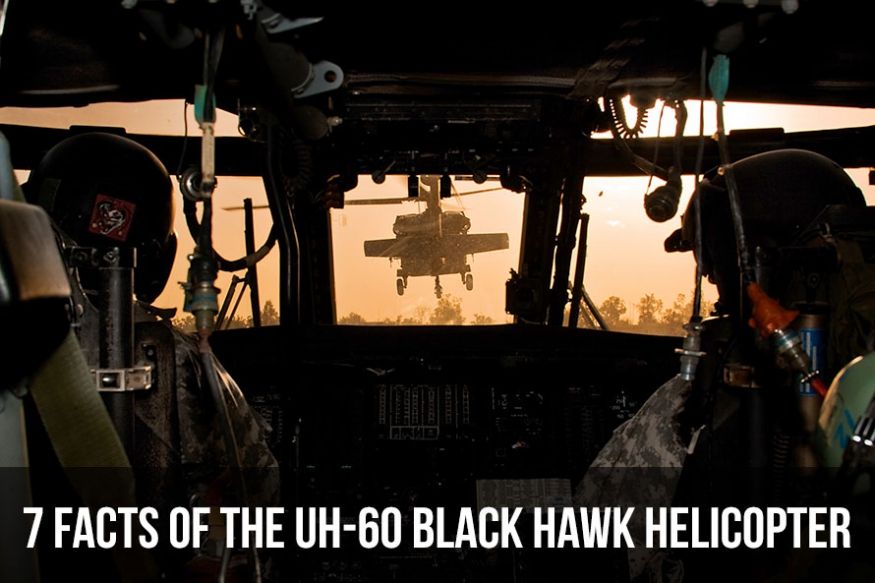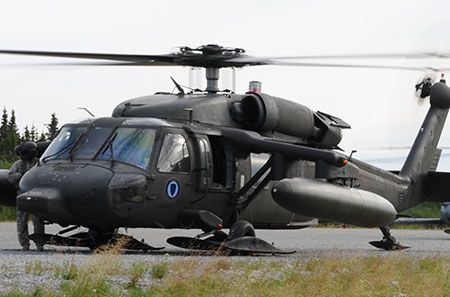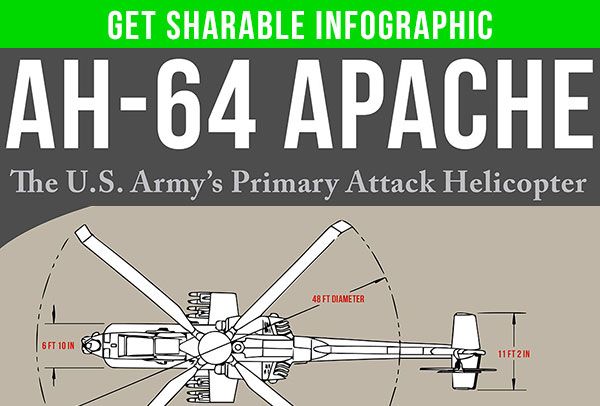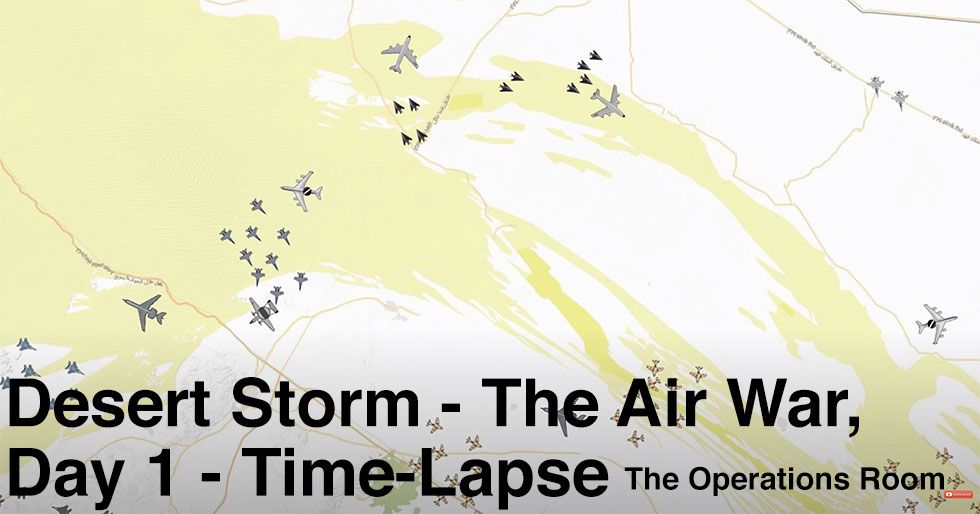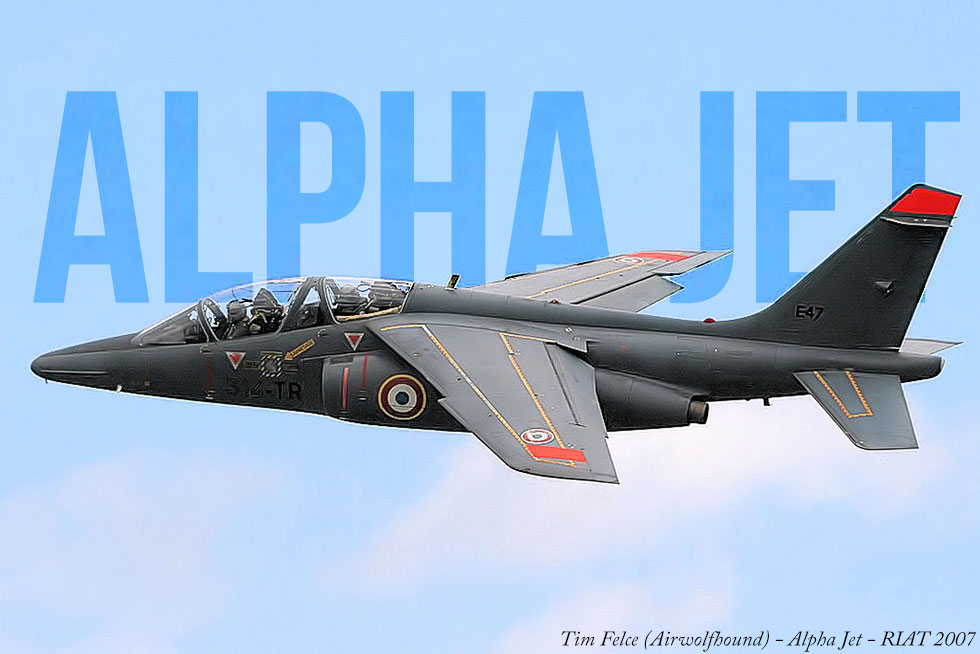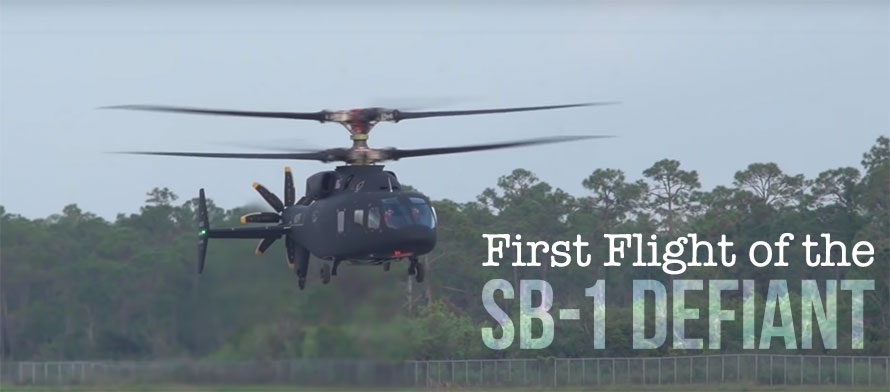At daybreak, the temperature is already a muggy 88 degrees in the tropical environment. An enemy observation post is perched midway up a hill with a view of the quiet valley floor below, their position well masked by foliage around the fighting hole, but not well covered from above. The two soldiers in the hole are on a 50/50 watch, or one is sleeping while the other remains ‘mostly’ awake.
 They are both startled as an American gunship helicopter pops out from the tree line before them on the other side of the valley. The on-duty soldier makes the mistake of pulling his rifle up instead of remaining still and radioing an alert back to his headquarters of this sudden activity. This movement gives their position away to the Apache aircraft. Quickly a burst of fire lashes out from beneath the AH-64 Apache to strafe the position before a warning can be sent. Now, neither in the observation post will be able to communicate that they see four attack helicopters escorting fourteen UH-60 Black Hawks that are crammed with air cavalry, flying just above the tree line. Due to the quick shot at the OP, the Americans will unload their infantry company into an LZ that is not hot, or under fire.
They are both startled as an American gunship helicopter pops out from the tree line before them on the other side of the valley. The on-duty soldier makes the mistake of pulling his rifle up instead of remaining still and radioing an alert back to his headquarters of this sudden activity. This movement gives their position away to the Apache aircraft. Quickly a burst of fire lashes out from beneath the AH-64 Apache to strafe the position before a warning can be sent. Now, neither in the observation post will be able to communicate that they see four attack helicopters escorting fourteen UH-60 Black Hawks that are crammed with air cavalry, flying just above the tree line. Due to the quick shot at the OP, the Americans will unload their infantry company into an LZ that is not hot, or under fire.
Also read: The Supervisory Control Unit of the GE T700-GE-701C Turboshaft
The bird of choice to carry this air cavalry company into combat is the Army’s primary medium-lift utility transport, the UH-60 Black Hawk. A Black Hawk is capable of carrying 11 combat-equipped troops. It can also serve as a medivac if needed, capable of carrying four full-size litters and a medical officer.
The UH-60 provides both pilots armor-protective seats, and the armored fuselage can withstand hits from up to 23mm shells. The Black Hawk can operate in most weather conditions with a host of advanced avionics. To defend itself, it is equipped with an AN/APR-39, a lightweight radar that warns of radar-directed threats and allows it time to take appropriate evasive maneuvers and deploy chaff. The UH-60 has a 4 bladed main rotor and a single 4-bladed tail rotor, both with titanium core making them resistant to AAA fire up to 23mm.
But what makes the UH-60 such a successful platform since its introduction of service in 1979? See the facts below to understand the power and efficiency of the Black Hawk helicopter.
7 Facts of the UH-60 Black Hawk Helicopter
- Speed – powered by two General Electric T700-GE-701D engines, the Black Hawk has a cruising speed of 174 mph, a rate of climb of 1,315 ft/min, and a service ceiling of 19,000 ft.
- Range – it has a range of 1,381 miles and a combat radius of 368 miles
- External Cargo Hook – cargo hook has a lift capacity of 8,000 lbs
- Mission – the UH-60’s primary mission is as a troop carrier and logistical support aircraft. Along with an ability to perform medical evacuations, this helicopter can be configured to conduct command-and-control, search-and-rescue, armed escort, electronic warfare, and executive transport missions.
- Crew – 2 pilots, 2 chiefs/gunners
- Armament – qualified launch platform that is capable of carrying 16 hellfire missiles and AIM-92 Stinger air-to-air missiles. With pintle mounts, some versions can carry 7.62mm or .50 caliber machine guns in windows.
- Fits Inside a C-130 – with some disassembly, the long, low profile of the Black Hawk allows it to be transported by a C-130 Hercules.
Bonus Fact: for operations in arctic environments, the Black Hawk can be fitted with skis.
Read also: Maintain a Chopper’s Orientation with the ASN-142 Attitude Heading Reference System
Serving the security interests of the United States as well as 23 other countries, the UH-60 is important to the missions of many nations around the world. With the need to extend the life of the helicopter and the availability of companies that repair its aging and obsolete systems, this multi-role medium-lift utility transport will remain in service for countries worldwide for years to come.

